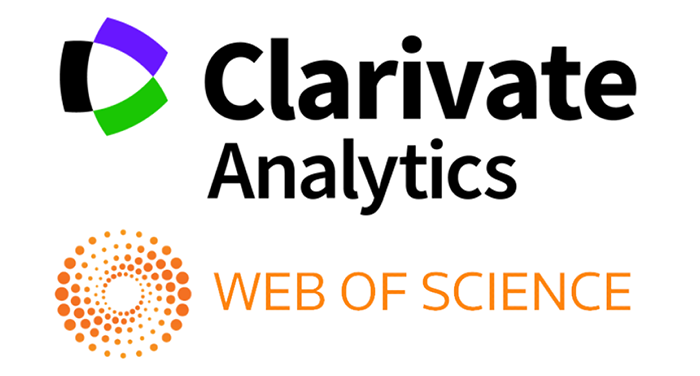SUD TILSHUNOSLIGINING PAYDO BO‘LISHI VA AHAMIYATI
"Maqola"
Tilshunoslik boshqa sohalar bilan aloqasi shu qadar keng qamrovliki, har bir sohaning o‘z tilshunoslik nuqtayi nazardan qonuniyatlari mavjud. Har bir sohani tarixi o‘rganilganda, osha sohaning tilshunosligi, terminglari ham shakllanib hamda o‘rganib borilganligini ko‘rish mumkin. Shu nuqtayi nazardan, sud tilshunosligi ham sudning tarixiy rivojlanishi bilan birga tilshunosligining shakllanib borganligini anlash mumkin.
References
Miranda v. Arizona, 384 U.S. 436 (1966).
Svartvik J. (1968). The Evans Statements: A Case for Forensic Linguistics. Goteborg: University of Goteborg. At p 332.
Johnston, T. S. (1966). The Judges' Rules and Police Interrogation in England Today. The Journal of Criminal Law, Criminology,
and Police Science, 85-92.
Olsson, J., & Luchjenbroers, J. (2013). Forensic linguistics. A&C Black.at p 337.
Blackwell, S. (2012). History of forensic linguistics. The Encyclopedia of Applied Linguistics.at p 223.
Blackwell, S. (2012). History of forensic linguistics. The Encyclopedia of Applied Linguistics.at p 228.
Olsson, J. (2014). What is Forensic Linguistics? the text. Co. UK/docs/what_is. Doc>. Acesso em, 25.
Schmalleger, F., Donaldson, S., Kashiwahara, K., Koppal, T., Chase, S., Brown, A., ... & Marash, D. (2014). Criminal justice today.
Prentice Hall. At p 125-128.
Olsson, J. (2014). What is Forensic Linguistics? the text. Co. UK/docs/what_is. Doc>. Acesso em, 25.
Levi, J. N. (1994). Language as evidence: the linguist as expert witness in North American courts. Forensic linguistics, 1(1): 1-26.
Rogers, R., Rogstad, J. E., Gillard, N. D., Drogin, E. Y., Blackwood, H. L., & Shuman, D. W. (2010). “Everyone knows their
Miranda rights”: Implicit assumptions and countervailing evidence. Psychology, Public Policy, and Law, 16(3), 300.
Rogers, R., Rogstad, J. E., Gillard, N. D., Drogin, E. Y., Blackwood, H. L., & Shuman, D. W. (2010). “Everyone knows their
Miranda rights”: Implicit assumptions and countervailing evidence. Psychology, Public Policy, and Law, 16(3), 300.
Rogers, R., Rogstad, J. E., Gillard, N. D., Drogin, E. Y., Blackwood, H. L., & Shuman, D. W. (2010). “Everyone knows their
Miranda rights”: Implicit assumptions and countervailing evidence. Psychology, Public Policy, and Law, 16(3), 300.
Rigney, A. (1999). Questioning in Interpreted Testimony. Forensic Linguistics, 6(1): 83– 108.
Krouglov, A. (1999). Police Interpreting: Politeness and Sociocultural Context. The Translator, 5(2): 285–302.
Olsson, J. (2014). What is Forensic Linguistics? the text. Co. UK/docs/what_is. Doc>. Acesso em, 25.
Shuy, R. W. (1997). The language of confession, interrogation, and deception (Vol. 2). Sage publications.
Olsson, J. (2014). What is Forensic Linguistics? the text. Co. UK/docs/what_is. Doc>. Acesso em, 25
Coulthard, M., Johnson, A., & Wright, D. (2016). An introduction to forensic linguistics: Language in evidence. Routledge. P 122-
Cole, R. W., & Maslow-Armand, L. (1997). Role of Counsel and the Courts in Addressing Foreign Language and Cultural Barriers
at Different Stages of a Criminal Proceeding, the. W. New Eng. L. Rev., 19, 193.
Pollard Jr, R. Q., & Berlinski, B. T. (2017). Forensic Evaluation of Deaf Individuals: Challenges and Strategies. Journal of social
work in disability & rehabilitation, 16(3-4), 261-275.
Saman, S. (2017). Potensi dan Tantangan Forensik Linguistik di Indonesia. ILSIA, 3.
Volck, B. (2018). Silent Communion: The Prophetic Witness of The Profoundly Disabled. Journal of Disability & Religion, 1-8.
Meyer, M. I., & Tredoux, C. G. (2016). Who do you believe? Effects of English, Cape Coloured and gay accents on perceived
witness credibility. Acta Criminologica: Southern African Journal of Criminology, 29(1), 18-32.
Menon, N. (2004). Recovering subversion: Feminist politics beyond the law. Ranikhet: Permanent Black. 115-126.
Meyer, M. I., & Tredoux, C. G. (2016). Who do you believe? Effects of English, Cape Coloured and gay accents on perceived
witness credibility. Acta Criminologica: Southern African Journal of Criminology, 29(1), 18-32.
Brubacher, S. P., Peterson, C., La Rooy, D., Dickinson, J. J., & Poole, D. A. (2019). How children talk about events: Implications
for eliciting and analyzing eyewitness reports. Developmental Review, 51, 70-89. Cambier-Langeveld, T. (2012). Clarification of
the issues in language analysis: a rejoinder to Fraser and Verrips. International Journal of Speech, Language & the Law, 19(2).
Hale, S. B. (2004). The discourse of court interpreting: Discourse practices of the law, the witness, and the interpreter, 52, John
Benjamins Publishing.
Hale, S. B. (2004). The discourse of court interpreting: Discourse practices of the law, the witness, and the interpreter, 52, John
Benjamins Publishing.
Benmaman, V. (1992). Legal Interpreting: An Emerging Profession. Modern Language Journal 76(4), Winter: 445–53.
Mandal, S. (2013). The burden of Intelligibility: Disabled women’s testimony in rape trials. Indian journal of gender studies, 20(1),
-29.
Miller, K. R., & Vernon, M. (2002). Assessing linguistic diversity in deaf criminal suspects. Sign Language Studies, 2(4), 380–390.
Patrick, P. L. (2019). Language Analysis for the Determination of Origin (LADO): An Introduction. In Language Analysis for the
Determination of Origin (pp. 1-17). Springer, Cham.
Finkelhor, D., Turner, H. A., Shattuck, A., & Hamby, S. L. (2015). Prevalence of childhood exposure to violence, crime, and abuse:
Results from the national survey of children’s exposure to violence. JAMA Pediatrics, 169(8), 746-754.
Copen, L. M. (2000). Preparing children for court: A practitioner's guide. Sage Publications.
Brubacher, S. P., Peterson, C., La Rooy, D., Dickinson, J. J., & Poole, D. A. (2019). How children talk about events: Implications
for eliciting and analyzing eyewitness reports. Developmental Review, 51, 70-89. Cambier-Langeveld, T.(2012). Clarification of the
issues in language analysis: a rejoinder to Fraser and Verrips. International Journal of Speech, Language & the Law, 19(2).
Edwards, J., Parson, J., & O‘Brien, W. (2016). Child play therapists’ understanding and application of the United Nations Convention
on the Rights of the Child: A narrative analysis. International Journal of Play Therapy, 25(3), 133.
Svartvik J. (1968). The Evans Statements: A Case for Forensic Linguistics. Goteborg: University of Goteborg
ANVAROVA, L. (2024). MEHNAT SAMARADORLIGI: IQTISODIY TARAQQIYOT VA UNI OPTIMALLASHTIRISH. News of the NUUz, 1(1.7. 1), 54-56.
ATANAZAROV, A. (2024). TALABA DZYUDOCHILARNI OG’IR ATLETIKA MASHQLARI YORDAMIDA PORTLOVCHI SIFATLARINI TAKOMILASHTIRISH. News of the NUUz, 1(1.7. 1), 57-59.
AXMEDOV, R. (2024). ABU BAKR MUHAMMAD ZAKARIYO ROZIY TA’LIMOTIDA AQL. News of the NUUz, 1(1.7. 1), 60-62.
Copyright (c) 2024 O‘zMU xabarlari

This work is licensed under a Creative Commons Attribution-NonCommercial-ShareAlike 4.0 International License.


.jpg)

.png)







